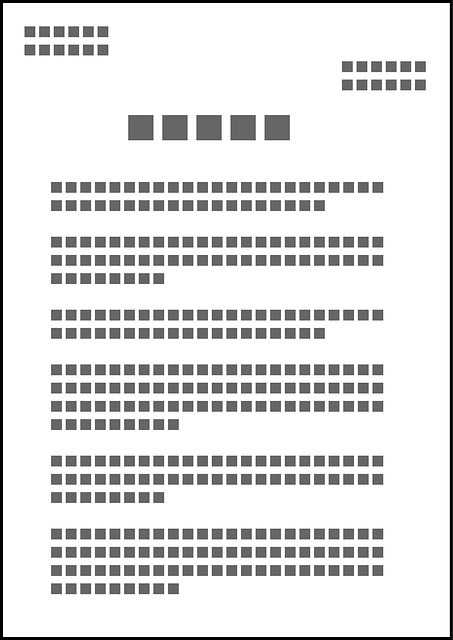Precision and cultural sensitivity are essential for translating UK art catalogs and exhibition brochures, ensuring global audiences can appreciate artists' visions. Professional translation services navigate linguistic and artistic complexities, preserving curatorial intent and fostering a democratic appreciation of diverse artworks. By employing native speakers with art history knowledge, these services ensure accurate representation of British art history and contemporary practices, enhancing cultural exchange in vibrant UK art exhibitions. Choosing human translators over AI guarantees subtlety and nuance in conveying curators' messages, making translation services vital for engaging international audiences and showcasing the richness of global artistic voices.
In the realm of UK art, the language used in catalogs and exhibition brochures plays a pivotal role in engaging audiences. Accurate translation is essential to convey curatorial visions effectively, ensuring international visitors can fully appreciate artistic concepts. This article delves into the critical aspects of capturing the curator’s voice through translation, exploring challenges from terminology to cultural nuances. We examine best practices, human vs. machine translation impacts, and successful case studies in UK art exhibitions, providing valuable insights for art catalog and brochure translation services.
- Understanding the Importance of Accurate Translation in Art Catalogs and Exhibition Brochures
- The Role of a Capture Curator: Defining Their Responsibilities and Influence
- Challenges in Translating Artistic Concepts and Terminology
- Cultural Considerations in UK Art Translation Services
- Ensuring Linguistic Fidelity: Techniques for Capturing the Curatorial Voice
- The Impact of Human Translation vs. Machine Translation in Art Documents
- Best Practices for Proofreading and Editing Art Catalogs and Brochures
- Case Studies: Successful Translations in UK Art Exhibitions
Understanding the Importance of Accurate Translation in Art Catalogs and Exhibition Brochures

In the realm of art, precision and clarity are paramount, especially when it comes to UK art catalogs and exhibition brochures. These publications serve as a bridge between artists’ visions and global audiences, making accurate translation services indispensable. A faithful translation ensures that viewers from diverse linguistic backgrounds can fully appreciate and engage with the artwork presented, preserving the curator’s intended narrative and artistic context.
When translating these materials, it’s not just about converting words from one language to another; it involves capturing the essence, tone, and intent of the original text. Professional translation services for UK art catalogs and exhibition brochures go beyond simple word choices, delving into cultural nuances and artistic terminology to produce documents that resonate with readers worldwide. This meticulous approach fosters a deeper connection between art enthusiasts, scholars, and the creative expressions they cherish.
The Role of a Capture Curator: Defining Their Responsibilities and Influence

In the realm of art appreciation, the capture curator holds a pivotal role in presenting and interpreting artistic expressions for a diverse audience. Their primary responsibility is to curate captivating exhibitions that tell a story, whether it’s through UK art catalogs or exhibition brochures. These materials serve as a bridge between the artist’s vision and the viewer’s understanding, making clear and accurate translation services essential.
The capture curator’s influence extends beyond the physical space of galleries and museums. They shape cultural discourse by selecting artworks that spark conversations and inspire critical thinking. By partnering with professional UK Art Catalogs and Exhibition Brochure Translation Services, curators ensure that their chosen pieces reach a broader, multilingual audience. This practice democratizes art appreciation, fostering a global community of art enthusiasts who can all contribute to and benefit from the rich tapestry of cultural expression.
Challenges in Translating Artistic Concepts and Terminology

Translating artistic concepts and terminology for UK art catalogs and exhibition brochures presents unique challenges. Art is inherently subjective, with nuances and metaphors that can be difficult to render accurately in another language. For instance, a word or phrase might carry cultural references specific to one language, making direct translation unsuitable or confusing. Moreover, capturing the intended aesthetic or emotional impact of an artwork requires not just linguistic skill but also an understanding of art history and context.
Specialized translation services that cater to this domain are crucial for preserving the curator’s voice and ensuring that the artistic vision is conveyed effectively. Such services employ translators with expertise in both the source and target languages, as well as a deep appreciation for art and culture. They go beyond literal translations, aiming to convey not just words but the essence of the artwork, making UK art catalogs and exhibition brochures accessible and engaging for international audiences.
Cultural Considerations in UK Art Translation Services

When translating UK art catalogs and exhibition brochures, cultural considerations are paramount. Art is inherently subjective, with meanings deeply rooted in specific cultural contexts. Translators must capture not just the literal meaning of texts but also their intended artistic and cultural nuances. This involves understanding references, allegories, and symbolism unique to British art history and contemporary practices.
UK Art Catalogs and Exhibition Brochures Translation Services should involve native speakers who are well-versed in both the source language and British art scene. They should possess a keen eye for detail, ensuring that translations accurately convey the essence of artworks while maintaining their cultural integrity. This specialized approach guarantees that the curator’s voice and artistic vision remain intact across languages, fostering meaningful connections with global audiences.
Ensuring Linguistic Fidelity: Techniques for Capturing the Curatorial Voice

Ensuring linguistic fidelity is paramount when translating UK art catalogs and exhibition brochures, as it directly reflects the curatorial voice and intent. Professional translation services understand that artistic texts often contain nuanced terms, specific to the field, and unique terminology used by curators. To capture this voice accurately, translators must have a deep understanding of both the source language and the art form.
Techniques such as back-translation, where a native speaker revises the work of an automated translator, can help identify subtle inaccuracies. Collaborating with art historians or subject matter experts also ensures that the translation stays true to the curator’s intended message. These methods allow for a seamless transfer of ideas and ensure that the translated text resonates with readers, maintaining the integrity of the original curatorial vision in UK art catalogs and exhibition brochures.
The Impact of Human Translation vs. Machine Translation in Art Documents

In the realm of UK art catalogs and exhibition brochures, the choice between human translation and machine translation can significantly impact the presentation and understanding of artistic content. Human translators, with their cultural sensitivity and linguistic expertise, bring a unique perspective that captures the nuances and subtleties often lost in machine-generated text. They ensure that the curator’s voice, filled with intent and passion, translates accurately, preserving the essence of the artistic vision.
On the other hand, while machine translation offers speed and cost-effectiveness, it may struggle with the intricate language used in art documentation. Human translators can handle complex terminology specific to artistic fields, providing a more immersive experience for readers. This becomes especially crucial when conveying information about artists’ intentions, historical contexts, and cultural references, ensuring that UK art catalogs and brochures remain reliable sources of knowledge for both locals and international visitors.
Best Practices for Proofreading and Editing Art Catalogs and Brochures

When it comes to translating UK art catalogs and exhibition brochures, precision is key. Curators invest considerable time and effort into crafting these publications, so it’s essential that their voice and intended message are accurately conveyed in the target language. To achieve this, a meticulous proofreading and editing process is vital.
Start by ensuring a native speaker with expertise in art terminology handles the translation. This expert should thoroughly understand the curator’s writing style and aim to replicate it while adapting to grammatical rules of the target language. Next, perform multiple rounds of proofreading to catch any subtle errors or inconsistencies. Check for accurate representation of artistic concepts, as well as proper formatting of dates, names, and other important details. Lastly, consider a peer review process to gain fresh insights and refine the translation further.
Case Studies: Successful Translations in UK Art Exhibitions

In the realm of UK art exhibitions, successful translations have become a cornerstone for engaging international audiences. Case studies highlight the pivotal role played by professional translation services in bringing together diverse cultural narratives within art catalogs and exhibition brochures. These services ensure that curatorial voices from around the globe are accurately represented, preserving the essence and intent behind each artwork.
For instance, when translating exhibits featuring contemporary artists from Asia or Africa into English, specialized translators not only handle linguistic nuances but also grasp the cultural context. This meticulous process allows UK art enthusiasts to appreciate global artistic expressions without losing the original artist’s message. Such translations enrich the visitor experience, fostering a true symphony of diverse artistic voices in one venue.
In conclusion, accurate translation of UK art catalogs and exhibition brochures is vital for connecting global audiences with artistic expressions. By understanding the unique role of capture curators, addressing challenges in artistic terminology, and considering cultural nuances, we can ensure linguistic fidelity to the curatorial voice. Human translation and careful proofreading practices significantly enhance the impact of these documents, as demonstrated by successful case studies. When it comes to UK art translation services, prioritizing human expertise and cultural sensitivity is key to creating meaningful and accessible art experiences for all.



